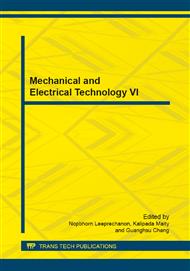p.311
p.316
p.322
p.327
p.332
p.337
p.342
p.347
p.352
Complex Network Based Modeling and Analysis of Resource Nodes for MG
Abstract:
Manufacturing Grid (MG) is one of the most promising manufacturing modes in recent years, which has been proved to be a complex network characterized with scale-free. In this paper, the resource nodes of MG are treated as the nodes of a network and the linkage among each node is treat as the edges or arcs, based on which a three-element model of G = ( V, E, R) is proposed, and a scene of the optimal composition strategy among the 50 candidate nodes aiming at task A is modeled. Next the static parameter of the degree for a resource node and the synchronization performance of the complex network model for the resource nodes are studied. Results of the paper can promote the management of the manufacturing resource nodes and improve the efficiency of sharing MG resources, so as to facilitate the application and popularization of MG.
Info:
Periodical:
Pages:
332-336
Citation:
Online since:
August 2014
Authors:
Keywords:
Price:
Сopyright:
© 2014 Trans Tech Publications Ltd. All Rights Reserved
Share:
Citation:


